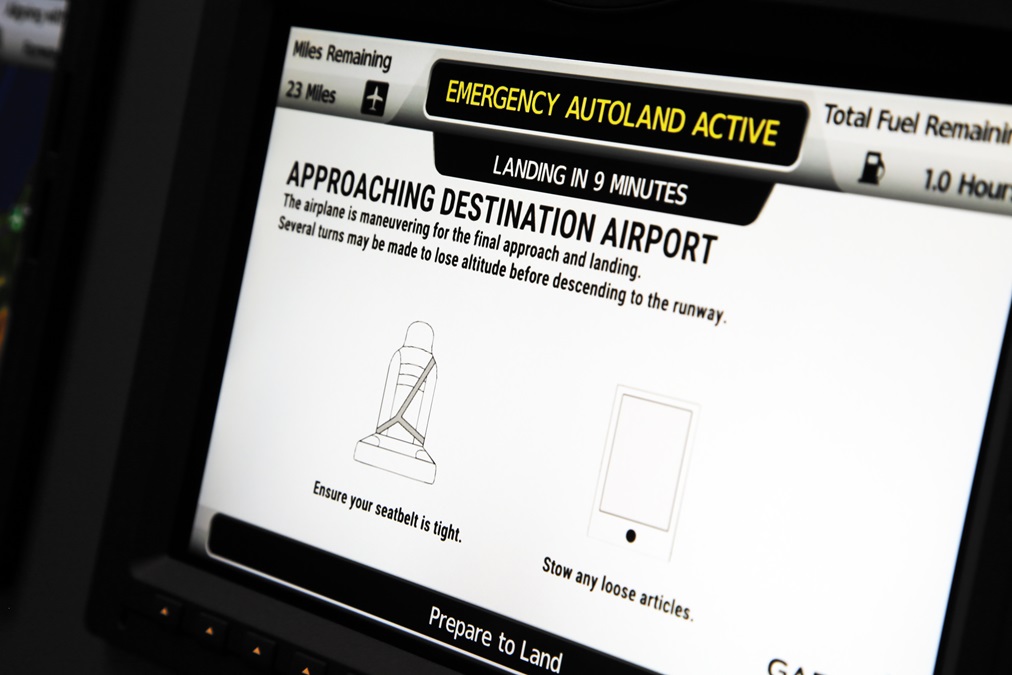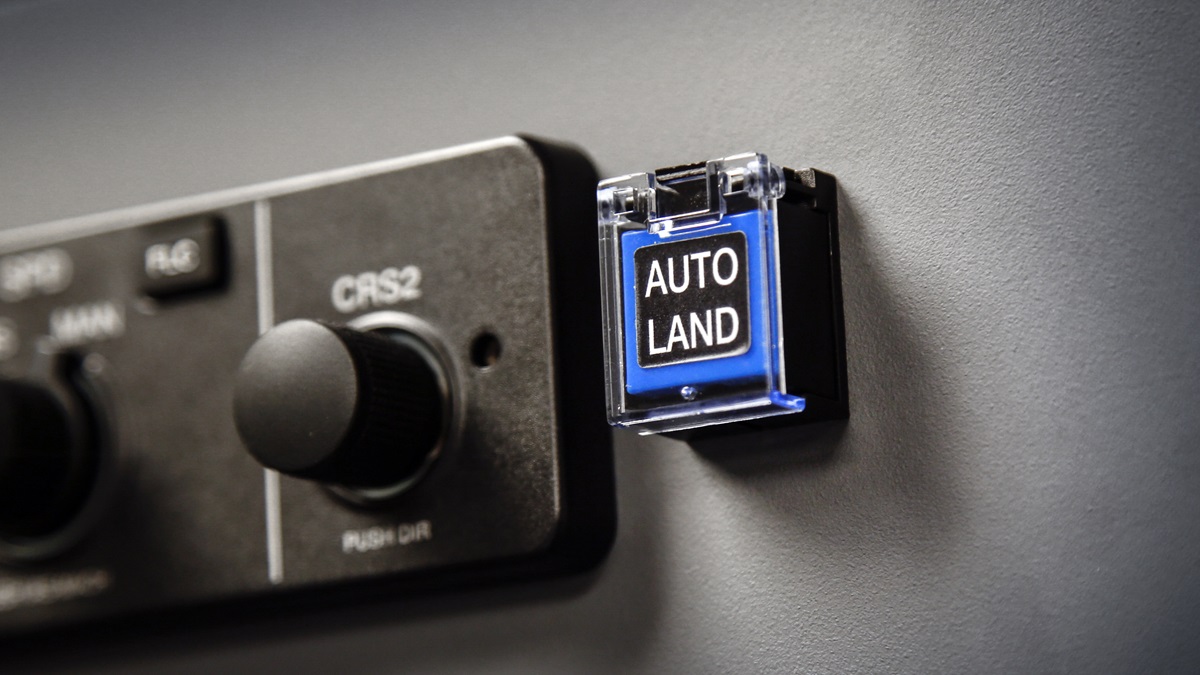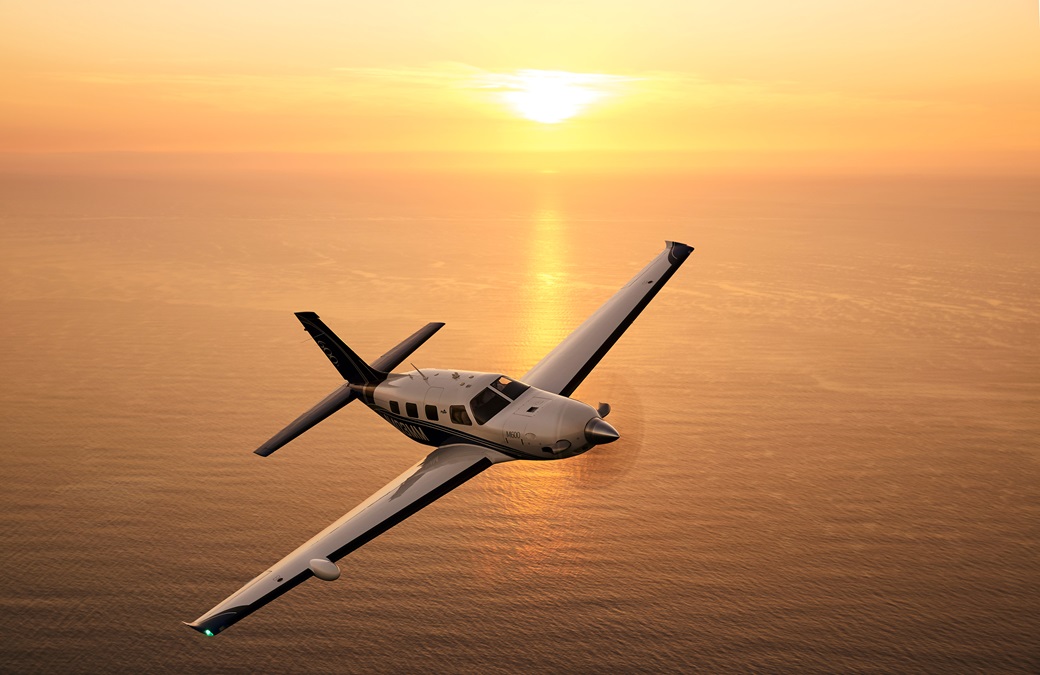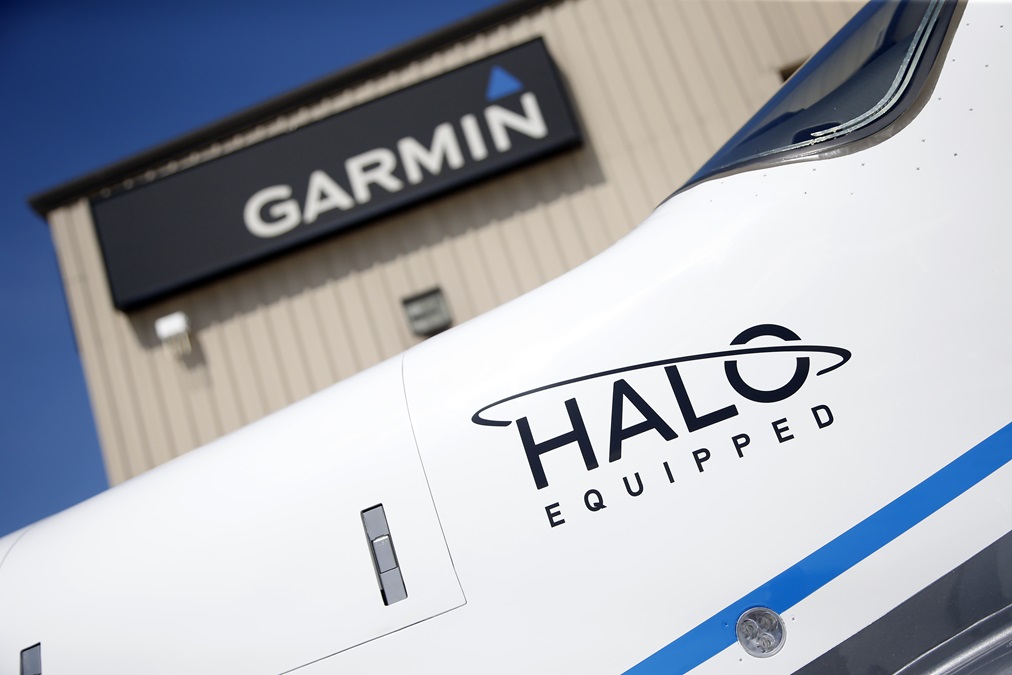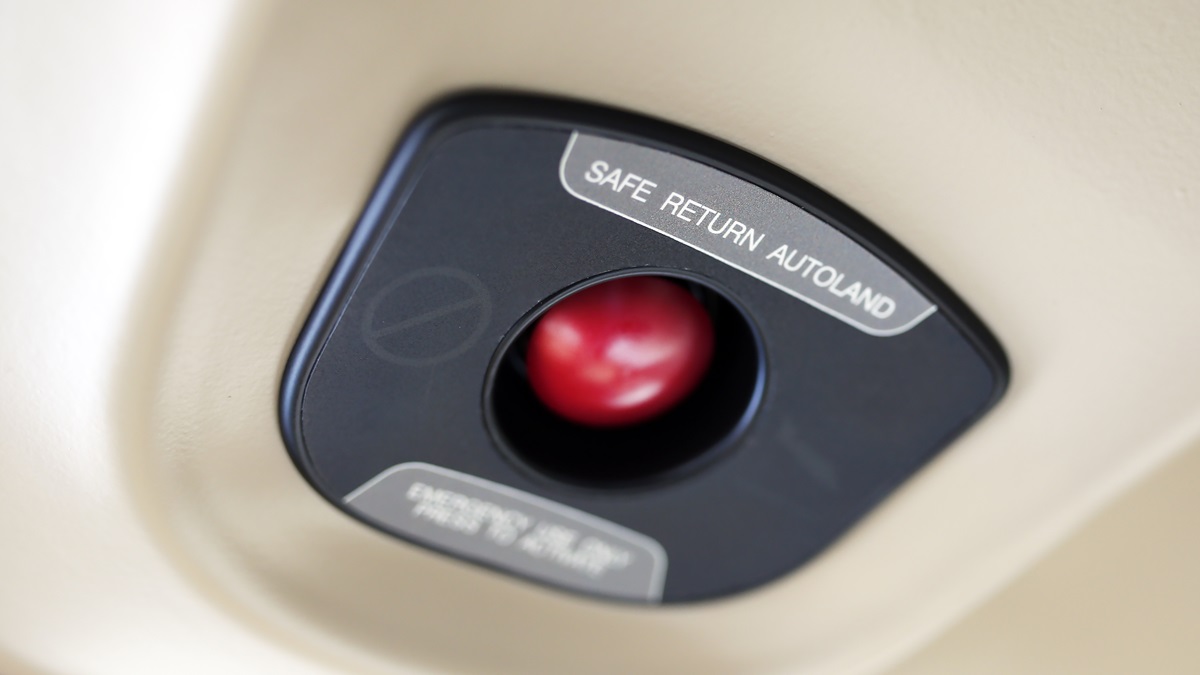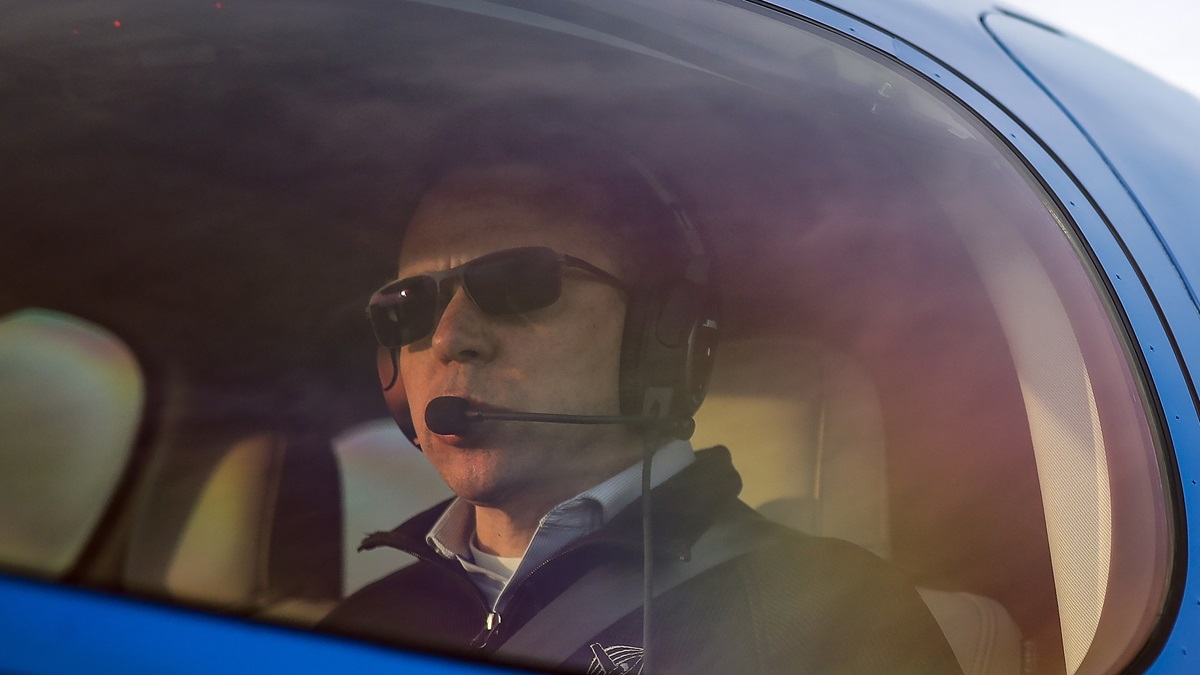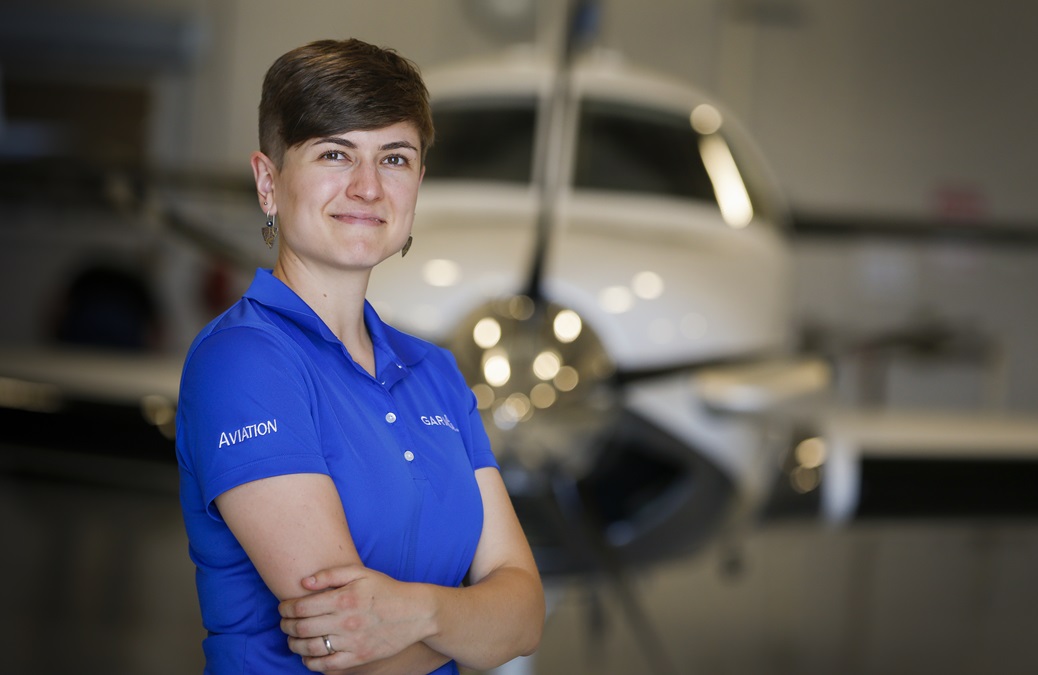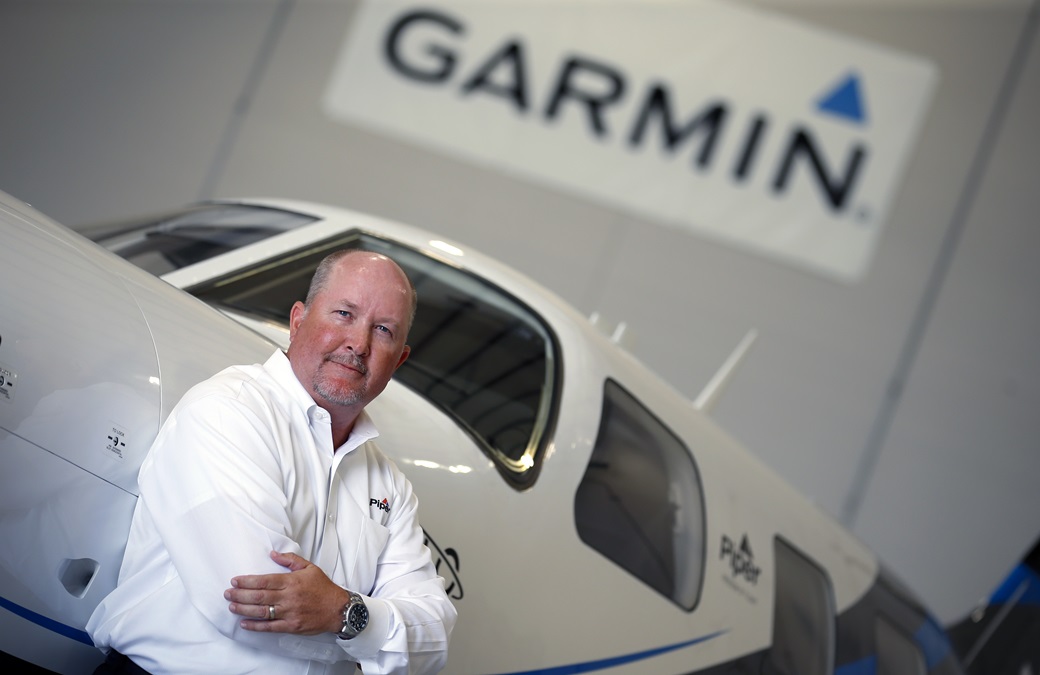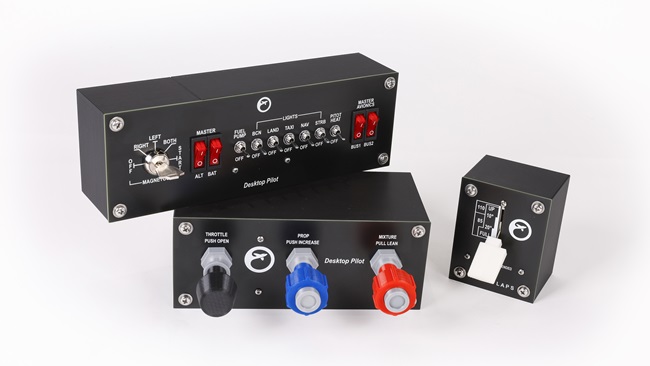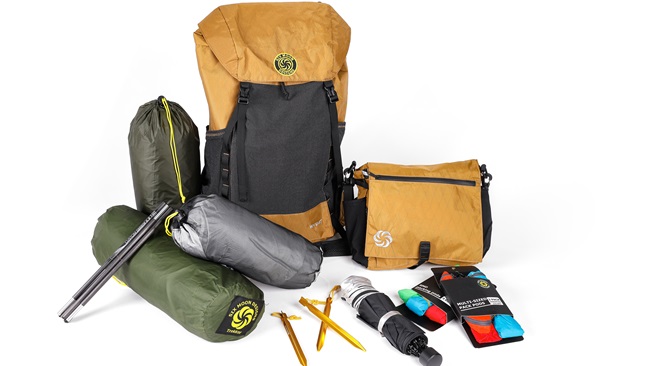Hands off
Garmin develops autoland system
During this first-ever autoland for me, nothing felt terribly out of the ordinary until the final 100 feet or so when it finally sunk in that in a few seconds we would be hitting the pavement and no one had their hands on the yoke.
But just as briefed, the airplane “decrabbed” from the 10-knot left crosswind and soon plunked us down just left of center on Runway 18 at New Century AirCenter in Olathe, Kansas, and then quickly tracked us back to the centerline. A few seconds later we rolled to a stop. I looked left at Eric Sargent, Garmin flight test pilot, who smiled broadly from the left seat of the Piper M600. “What do you think?” he asked.
“Stunned,” I said. “That’s pretty amazing.”
And such was my introduction to Garmin’s new autoland system, a first in general aviation.
The system is the newest addition to a family of automated flight technologies that Garmin has dubbed Autonomí. After the introduction over the past few years of the two other parts of Autonomí; Emergency Descent Mode (EDM) and Electronic Stability and Protection (ESP), autoland is the next logical step.
Combined with autoland, the three form what is basically a digital parachute for the pilot and passengers. If a pilot becomes incapacitated or disoriented, the systems take over either automatically or when activated by the pilot or a passenger, and first stabilize the airplane and if necessary land it.
ESP debuted several years ago and is basically an always-on autopilot that only kicks in when the pilot attempts to stray outside the flight envelope or if the pilot does not respond to keep the airplane flying safely inside the envelope. It will gently nudge the flight controls to keep the airplane out of over- or underspeed situations and to limit bank angle. If a pilot fights ESP for a period of time, as one might if disoriented in the clouds, the system turns on the Level mode of the autopilot. If the pilot doesn’t turn it off after a period of time, the new Autoland system turns on and begins the landing sequence. The pilot can deactivate Autoland a number of ways, including by touching the Autopilot button on the autopilot mode controller or by hitting the red autopilot disconnect button on the yoke. If that happens, a message pops up on the multifunction display on how to reactivate the system in case a passenger inadvertently disconnects it.
Meanwhile, EDM kicks in when the pilot hasn’t interacted with the panel or flight controls within a certain time period. It first poses the question on the cockpit displays: “Are you alert?” If no one touches a button on the panel, it assumes the pilot is incapacitated and descends to a breathable altitude and levels off. In the case of a pressurization problem, it activates immediately.
But then what?
Well, now, with certification pending for Autoland on the M600 SLS and shortly thereafter on the Cirrus SF50 Vision Jet, the Garmin panel goes to the next step of beginning an automated sequence of events that results in a safe touchdown on a runway, where it rolls the airplane to a stop, shuts down the engine, broadcasts a message on the local frequency that the airport is closed because of a disabled aircraft on the runway, and plays a video on the multifunction display that instructs the passengers how to open the door and get out.
After I hit the Autoland button, the system went through a series of complex calculations and decision-making processes to determine the nearest suitable runway.Our demo of the system presented a more realistic scenario. We were at about 3,500 feet in the M600 single-engine turboprop flying at about 170 knots indicated airspeed when I—feigning chest pain—lifted the plastic guard on a switch on the panel and then pushed the button underneath. Within a few seconds a message appeared across all three displays in the G3000 panel indicating “Emergency Autoland Active.” The system stripped away all information that would not be useful to a nonpilot, and it displayed the amount of fuel remaining in hours and tenths of an hour and the time and miles until we would be landing, as well as the name of the destination airport—the common name associated with the airport, not necessarily the field name familiar to pilots. Gone from the primary flight display and the MFD were all the complicated engine gauges and the extraneous PFD information except for altitude, airspeed, and attitude. A map page displayed our path to the chosen airport (displayed using an airport symbol as you might see on a highway sign, not as the chart symbol that only pilots might recognize)—including, as required, a holding pattern to allow the airplane to descend and slow down in order to make a stabilized approach.
The displays also reminded the passenger that no action was required on their part.
A video on the MFD explained what was happening and pointed out that the two touch-screen displays at the bottom of the panel had changed to show large microphones on them. The video instructed the passenger to move the headset microphone to their mouth and that if they wanted to, they could press the screens like a walkie-talkie to speak to ATC and release to listen for a response.
Of course, that is not a requirement because the Autoland system would have already (although not in our demonstration) begun transmitting on the tuned frequency and the emergency frequency of 121.5 MHz a message telling anyone listening that N60HL, in this case, had a possibly incapacitated pilot and that it would be landing at New Century AirCenter in six minutes. It would update and broadcast that message every 30 seconds—listening to make sure that it didn’t transmit over any other radio calls. Once near the Class D airspace of the tower, it would have changed one of the radios to the tower frequency and kept the other on the emergency frequency. The system also would have changed the squawk code to 7700, the emergency code.
During those first few seconds after I hit the Autoland button, the system went through a series of complex calculations and decision-making processes to determine the nearest suitable runway based on runway length, width, and surface; fuel remaining; crosswind component; terrain; obstacles; and general weather information. The system requires an RNAV approach, but beyond that, the runway and weather criteria can be decided by the airframe manufacturer.
The system even forecasts its own weather if the nearest suitable runway is a significant distance away, long enough that the current ADS-B or SiriusXM weather may not be valid. It uses the latest weather trend information, for example, to determine if a thunderstorm might move into the runway environment where it intends to land. It will route the airplane around thunderstorms as well as terrain and obstacles, all of which it gets from its internal databases. If en route to a runway it determines, because of changing weather conditions, that another runway is closer or more suitable, it will change its destination. It can even estimate changing barometric conditions and adjust the altimeter—using algorithms. Garmin engineers say the calculated barometric readings are within 0.01 inches of mercury of actual ambient conditions.
The system will work anywhere in the world except a few places in China, Russia, and Central Africa where data isn’t available for the system to make landing decisions. Even then, it may be able to fly into an area where there is enough information available to make a landing decision if enough fuel is on board.
In our case, the decision making was easy, as New Century was only a few miles away with multiple runways and approaches. After Autoland made its decision, the autothrottle system actually accelerated the airplane to about 200 knots, getting us to the airport as quickly as possible. At this writing, Piper was expecting that the autothrottle system on the M600 to be for this emergency use only. However, Piper plans to get it certified for all phases of flight. The Vision Jet already has a certified autothrottle system.
Once nearing a fix for the RNAV Runway 18 approach, the airplane began a descent to the initial altitude of 3,100 feet msl, accelerating to 230 knots. Because we were high and fast, it entered a one-turn hold to continue the descent and to slow down, ultimately rolling us out on a perfect final approach course. Upon intercepting the glidepath, it automatically lowered the landing gear and flaps to the Approach setting, the only flap setting it will use on the M600. Winds were 090 at 10, so it crabbed into the wind on the final approach path and adjusted the thrust setting to slow us to 102 knots indicated.
Had the temperatures been nearing freezing, it also would have activated the airplane’s anti-icing or deicing systems at the start.
A few hundred feet above the runway, it kicked the nose straight and lowered the left wing to maintain the course—“decrabbing” as Sargent calls it. Just over the runway, the radar altimeter began feeding height information to the flight control system, allowing it to pitch up slightly—a flare. The autothrottle rolled the thrust back to idle and a few seconds later we touched down as the system actuated the servos on the brakes to bring us to a stop. Reverse thrust is not available to the Autoland system.
Look Ma, no hands!
While the notion of an autoland system seems futuristic, Garmin has been quietly working on it since 2011 and conducted its first autoland in a Columbia piston-powered airplane in 2014 and first briefed the FAA on it in 2015. Since then it has conducted some 800 autolands.
The system is not like the autoland systems on airliners and a few models of business jets in that those systems require a ground-based signal—a Category III ILS—specially trained and certified crews, and dual or triple redundant autopilot systems, among other equipment. Such precise ILSs are available at only a small number of runways.
During initial testing, Garmin created “runways in the sky” and built approaches to those runways, having the system then fly to the runway—at a safe altitude.
Bailey Scheel, senior aviation systems programs engineer and project manager for Autoland, said the company has had some 100 people working on the project over the past five years. She said disciplines from throughout Garmin were leveraged to make it happen. Even the team at Garmin Drive, its automotive GPS division, were consulted on how to best choose routes back to an airport.
Over the years, the company has put dozens of nonpilot staffers into airplanes on company trips and during test flights, asking them what they would want to see and not see if the pilot were incapacitated and Autoland activated. Using the feedback, they dramatically refined the passenger information. In the beginning the engineers wanted to ignore that completely and focus only on getting the aircraft safely on the ground. But after numerous human factors studies and with staff input, the group decided that passenger information was important and necessary.
As it stands the system seems super sophisticated and almost over the top in what it does to keep the passengers informed. Throughout the flight with Autoland engaged, the MFD constantly updates the position, time to landing, and fuel status and then, for each phase of flight, shows a video to get the passenger ready—showing when and how to fasten seat belts and stow loose objects, how to use the headsets, how to talk to ATC—if desired—and, as noted above, how to open the door and get out.
So if it works so well, why not use it routinely?
Not soon, Garmin insists. If the system is activated, the 7700 squawk code will alert ATC to the emergency and the pilot likely will need to explain his or her reason for using it. But certainly on a day when the weather has failed to improve as forecast, fuel is running low, and the pilot is running out of options, Autoland is a viable option, since ceiling and visibility don’t matter. Someday, with more experience and the FAA more comfortable with the notion, perhaps Autoland will be available on any given flight where the pilot doesn’t feel up to the landing.
Meanwhile, it’s a great safety feature. “This will save lives,” said Ron Gunnarson, Piper’s vice president of sales, marketing, and customer support. Once certified, the system will be standard on the 2020 M600 SLS models. The SLS replaces the standard M600 and includes a host of safety, luxury, and service features not available previously—among them Autoland. And while it includes new features, the price will stay the same as the 2019 base price of $2.9 million. Gunnarson said the new upgrades and equipment have a value of about $330,000. Typically equipped, an M600 SLS will leave the factory with a list price of about $3.1 million.
For the Vision Jet, which already has autothrottles, the upgrade comes as primarily a software change and the addition of the radar altimeter, according to Matt Bergwall, Cirrus’ director of the Vision Jet product line. Cirrus plans to offer Autoland as a standard feature on the 2020 models.
While Piper puts a guarded Autoland switch on the panel in front of the passenger, Cirrus chose to put a large red recessed button on the cabin ceiling reachable by those in the front seat and those in the middle-row seats. The button is labeled “Safe Return Autoland.” While the Piper system actuates almost immediately upon pushing the button, the Cirrus system waits a few seconds, giving the pilot a chance to override easily it if it is accidently pushed.
For Cirrus, Autoland adds another layer of protection on top of its standard CAPS whole airframe parachute system. Cirrus CEO Zean Nielsen describes CAPS as the “sick airplane, healthy pilot” safety option—the choice when the airplane cannot safely make it back to a runway. Autoland is the “sick pilot, healthy airplane” option—something to be actuated when the pilot is not able to safely land the airplane.
According to Bergwall, if no suitable runway is available to the SF50 once Autoland is selected, the cockpit displays will advise the passenger to utilize the CAPS parachute. A video animation advising how to pull the red T handle nestled in the overhead console will play on the MFD.
While Autoland is currently under development for the G3000 cockpits with the appropriate additional systems, such as autothrottle, radar altimeter, and automatic braking, Garmin says the system may be retrofittable to earlier G3000s, with the final decision in the hands of the aircraft manufacturer.
Meanwhile, Garmin plans to move the capability up to its G5000 panel in higher-end business jets and down to its lower end products such as G1000 and potentially other less integrated panel systems. The challenge there is the lack of autothrottle; radar altimeter; and, in some models, limited rudder authority, making it difficult to keep the airplane on the runway.
But Scheel and other Garmin engineers we spoke to say there may be workarounds. GPS altitude, for example, may be good enough for sensing height above the runway and initiating the flare, obviating the need for a radar altimeter. GPS altitude is the fall-back system should the radar altimeter fail on the G3000 systems. A pilot or passenger may need to be aware enough to make some throttle adjustments, but one could imagine a system that could cut the engine off and use pitch changes to manage descents and speeds, allowing the windmilling propeller to restart the engine as needed to maintain a safe approach speed—similar to how World War I pilots used a blip switch to shut off and restart the engine of early airplanes with limited throttle control. And perhaps the system would only choose runways long enough to roll to a stop without braking, eliminating need for control of the brakes.
Garmin has even contemplated the need to educate other pilots who may hear an Autoland automated message and controllers who may find an Autoland airplane active in their airspace. The company is working with the FAA to amend the Pilot/Controller Glossary to include language about the system.
With years of development behind it, Autoland appears very ready for prime time. During our interviews with Phil Straub, Garmin executive vice president and managing director, aviation, and with Cliff Pemble—Garmin president and CEO—the two stressed the need to continue to improve GA safety. Pemble in particular beamed with pride about the work the aviation division has done to bring new levels of safety to general aviation.
Scheel said it most succinctly. “We’re here to make pilots safer and give them new options.”
Email [email protected]


